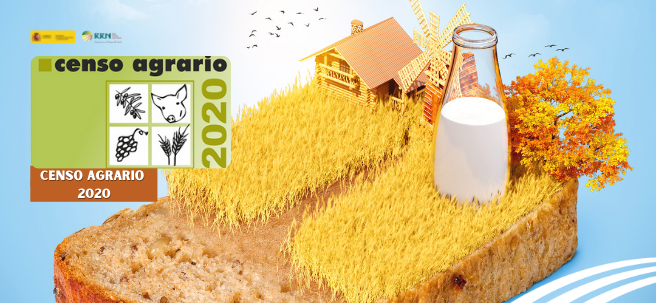
09 de May de 2022
The Agricultural Census is carried out every 10 years with the aim of evaluating the situation of Spanish agriculture and livestock.
- The Agricultural Census is carried out every 10 years with the aim of evaluating the situation of Spanish agriculture and livestock.
- The National Institute of Statistics is the body responsible for this, in close collaboration with the Ministry of Agriculture, Fisheries and Food (MAPA).
- Data for 2020 show a 7.6% reduction in the number of farms compared to the last edition, although the agricultural land used has grown by 0.7% and exceeds 23.9 million hectares.
- One of the most significant data is the increase in the role of women in agricultural activity, which is reflected in a 22% growth in the number of female farm managers.
The National Institute of Statistics (INE) has presented this week the new Agricultural Census 2020 , in whose preparation the collaboration of the Ministry of Agriculture, Fisheries and Food (MAPA) has been fundamental, through the Spanish Agricultural Guarantee Fund (FEGA) and the General Subdirectorate of Analysis, where extensive statistical information is available on the configuration of agricultural holdings in Spain.
The Agricultural Census is conducted every 10 years with 3 fundamental objectives:
- Evaluate the situation of Spanish agriculture and livestock farming.
- Obtain a directory of agricultural holdings.
- Serve as a basis for the formulation and implementation of agricultural policies , especially the Common Agricultural Policy (CAP).
The census is conducted based on applications for CAP aid submitted during the 2020 campaign and the Livestock Farm Registry (REGA), if they have livestock. Among those who do not apply for aid, information is collected through questionnaires.
Highlights
Data from the 2020 Agricultural Census reveal the following picture of the Spanish countryside:
- A 7.6% reduction in the number of agricultural holdings has been noted compared to the last edition in 2010: 914,871 holdings in 2020.
- Despite this, the used agricultural area (UAA) has grown by 0.7%: 23.9 million hectares .
- There is an increase in the average surface area of farms , which stands at 26.37 hectares , 7.4% more than in 2009.
- One of the most significant findings is the incorporation and visibility of women in agricultural activity, reflected in a 22% increase in the number of female farm managers and a 28.6% increase in female managers overall.
- Castilla y León recorded the highest average size per farm ( 63.02 hectares ) and the Canary Islands the smallest ( 4.81 hectares ).
- The number of livestock heads grew by 6.5% compared to the last census. The growth was most significant in the case of pigs, at 21.8%.
- The workforce on farms decreased by 7.7% in 2020 compared to the previous census.
- In 2020, the SAU from organic farming represented 7.8% of the total SAU.
The new Agricultural Census offers an interactive monograph with maps that allows for comparisons and customization of data selections. It also includes, for the first time, information segmented by agricultural district, in addition to the usual information by autonomous community and province. The INE plans to update most of the statistics contained in the Agricultural Census annually to ensure their continued relevance and usefulness.
The 2020 Agricultural Census can be consulted at the following link.











